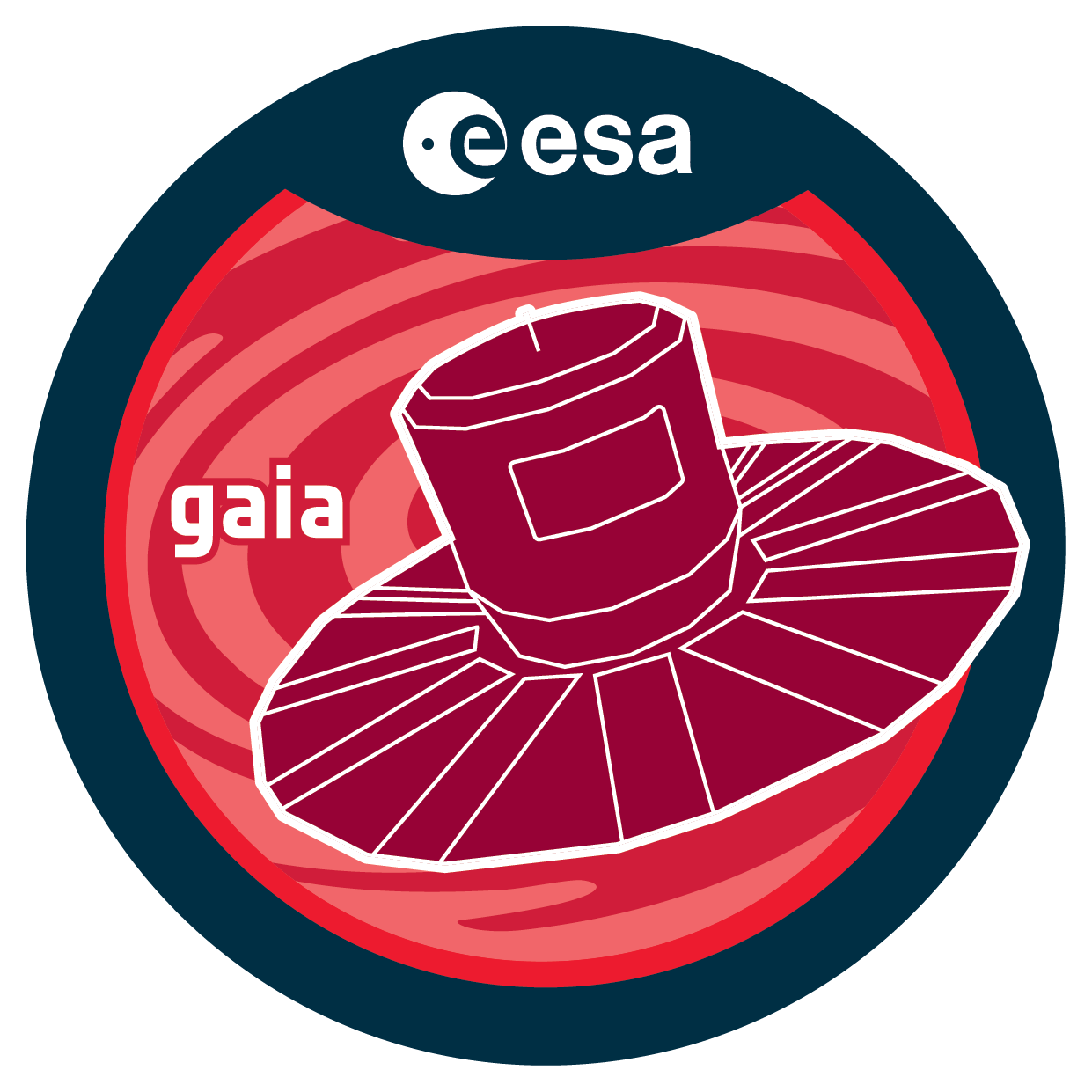| DOI |
https://doi.org/10.5270/esa-ycsawu7 |
| Name |
Gaia Data Release 2 (Gaia DR2) |
| Mission |
Gaia |
| Portal URL |
https://www.cosmos.esa.int/web/gaia/data-release-2 |
| Content URL |
Gaia DR2 full data repository
Gaia Archive at ESA
|
| Version |
1.0 |
| Description |
Contents of Gaia DR2
- The five-parameter astrometric solution - positions on the sky (α, δ), parallaxes, and proper motions - for more than 1.3 billion sources, with a limiting magnitude of G = 21 and a bright limit of G ≈ 3. Parallax uncertainties are in the range of up to 0.04 milliarcsecond for sources at G < 15, around 0.1 mas for sources with G=17 and at the faint end, the uncertainty is of the order of 0.7 mas at G = 20. The corresponding uncertainties in the respective proper motion components are up to 0.06 mas yr-1 (for G < 15 mag), 0.2 mas yr-1 (for G = 17 mag) and 1.2 mas yr-1 (for G = 20 mag). The Gaia DR2 parallaxes and proper motions are based only on Gaia data; they do no longer depend on the Tycho-2 Catalogue.
- Median radial velocities (i.e. the median value over the epochs) for more than 7.2 million stars with a mean G magnitude between about 4 and 13 and an effective temperature (Teff) in the range of about 3550 to 6900 K. This leads to a full six-parameter solution: positions and motions on the sky with parallaxes and radial velocities, all combined with mean G magnitudes. The overall precision of the radial velocities at the bright end is in the order of 200-300 m s-1 while at the faint end the overall precision is approximately 1.2 km s-1 for a Teff of 4750 K and about 2.5 km s-1 for a Teff of 6500 K. An additional set of more than 361 million sources for which a two-parameter solution is available: the positions on the sky (α, δ) combined with the mean G magnitude. These sources have
a positional uncertainty at G=20 of about 2 mas, at J2015.5.
- G magnitudes for more than 1.69 billion sources, with precisions varying from around 1 milli-mag at the bright (G<13) end to around 20 milli-mag at G=20. Please be aware that the photometric system for the G band in Gaia DR2 is different from the photometric system as used in Gaia DR1. GBP and GRP magnitudes for more than 1.38 billion sources, with precisions varying from a few millimag at the bright (G<13) end to around 200 milli-mag at G=20.
- Full passband definitions for G, BP and RP. These passbands are available for download.
- Epoch astrometry for 14,099 known solar system objects based on more than 1.5 million CCD observations. 96% of the along-scan (AL) residuals are in the range -5 to 5 mas, and 52% of the AL residuals are in the range of -1 to 1 mas. The transit observations are part of Gaia DR2 and have also been delivered to the Minor Planet Center (MPC).
- Subject to limitations, the effective temperatures Teff for more than 161 million sources brighter than 17th magnitude with effective temperatures in the range 3000 to 10,000 K. For a subset of about 87 million sources also the line-of-sight extinction AG and reddening E(BP-RP) are given and for a part of this subset (around 76 million sources) the luminosity and radius are available as well.
- Classifications for more than 550,000 variable sources consisting of Cepheids, RR Lyrae, Mira and Semi-Regular Candidates as well as High-Amplitude Delta Scuti, BY Draconis candidates, SX Phoenicis Candidates and short time scale phenomena.
- Cross-matches between Gaia DR2 sources on the one hand and Hipparcos-2, Tycho-2, 2MASS PSC, SDSS DR9, Pan-STARRS1, GSC2.3, PPM-XL, AllWISE, and URAT-1 data on the other hand.
- Finally, Gaia DR2 also represents a new materialisation of the celestial reference frame in the optical, the Gaia-CRF2, which is the first optical reference frame based solely on extragalactic sources.
For more information, see https://www.cosmos.esa.int/web/gaia/data-release-2
Gaia Data Release 2 papers: https://www.cosmos.esa.int/web/gaia/dr2-papers
Gaia Data Release 2 documentation: https://gea.esac.esa.int/archive/documentation/GDR2/index.html
|
| Publication |
Gaia Collaboration et al. (2018), "Gaia Data Release 2. Summary of the contents and survey properties", Astronomy & Astrophysics, 616, A1;
https://doi.org/10.1051/0004-6361/201833051
|
| Temporal Coverage |
From 25 July 2014 (10:30 UTC) to 23 May 2016 (11:35 UTC) |
| Mission description |
Gaia is a European space mission providing astrometry, photometry, and spectroscopy of more than 1000 million stars in the Milky Way.
Also data for significant samples of extragalactic and Solar system objects is made available.
The Gaia Archive contains deduced positions, parallaxes, proper motions, radial velocities, and brightnesses.
Complementary information on multiplicity, photometric variability, and astrophysical parameters is provided
for a large fraction of sources.
Gaia Collaboration et al. (2016): "The Gaia mission", Astronomy & Astrophysics, 595, A1;
https://doi.org/10.1051/0004-6361/201629272
|
| Creator contact |
Gaia Helpdesk (e-mail: gaia-helpdesk@esa.int or ticketing system: https://support.cosmos.esa.int/gaia/) |
| Author |
Gaia Collaboration 2018 |
| Contributors |
Gaia Data Processing and Analysis Consortium (DPAC) |
| Publisher and Registrant |
European Space Agency |
| Acknowledgement |
This work has made use of data from the European Space Agency (ESA) mission Gaia, processed by the Gaia Data Processing and Analysis Consortium (DPAC). Funding for the DPAC has been provided by national institutions, in particular the institutions participating in the Gaia Multilateral Agreement.
Full Gaia data credits: https://www.cosmos.esa.int/web/gaia-users/credits
|
| Citation Guidelines |
European Space Agency, Gaia Collaboration, 2018, Gaia DR2, Version 1.0, European Space Agency, https://doi.org/10.5270/esa-ycsawu7 |

